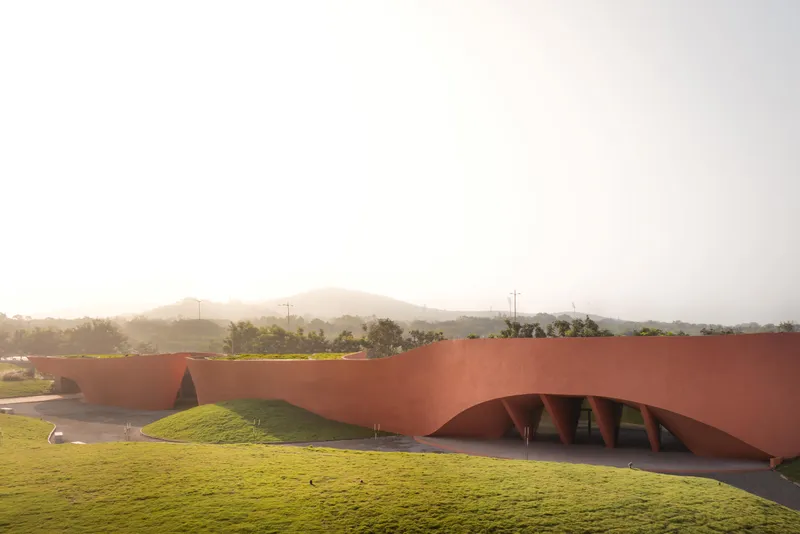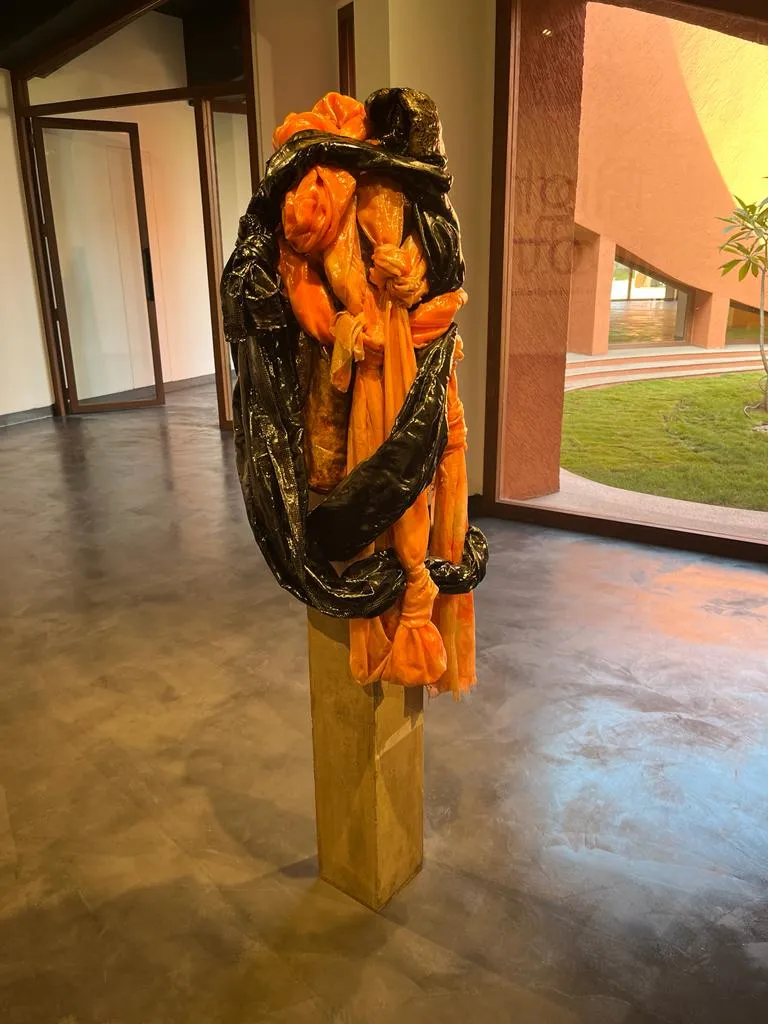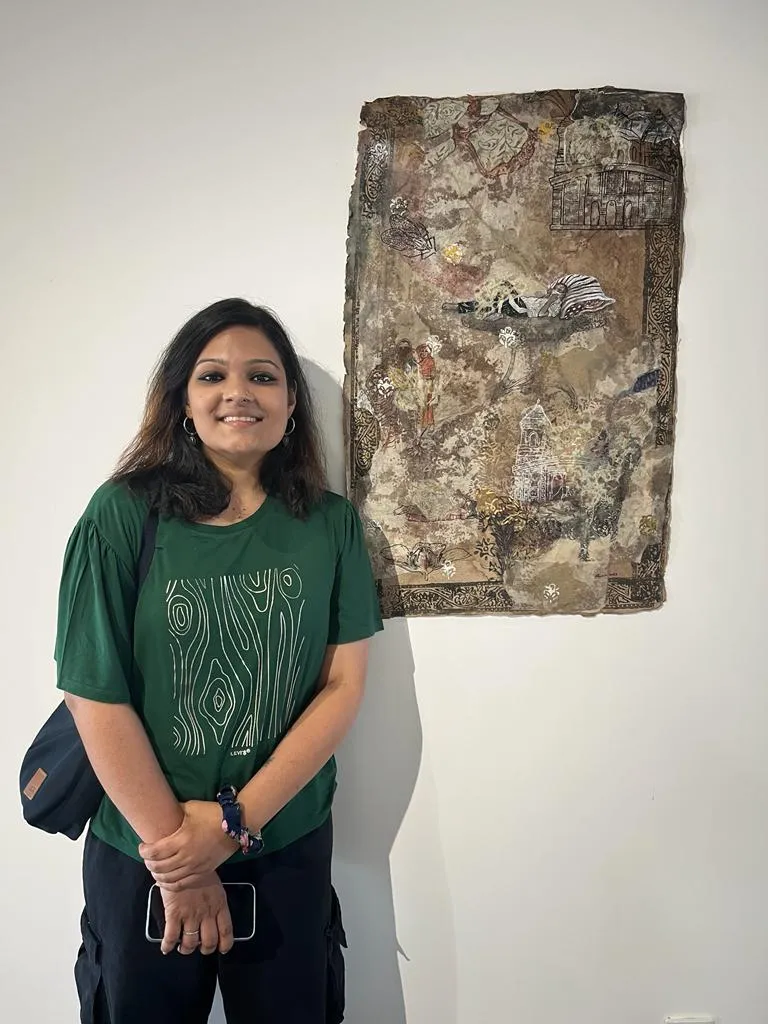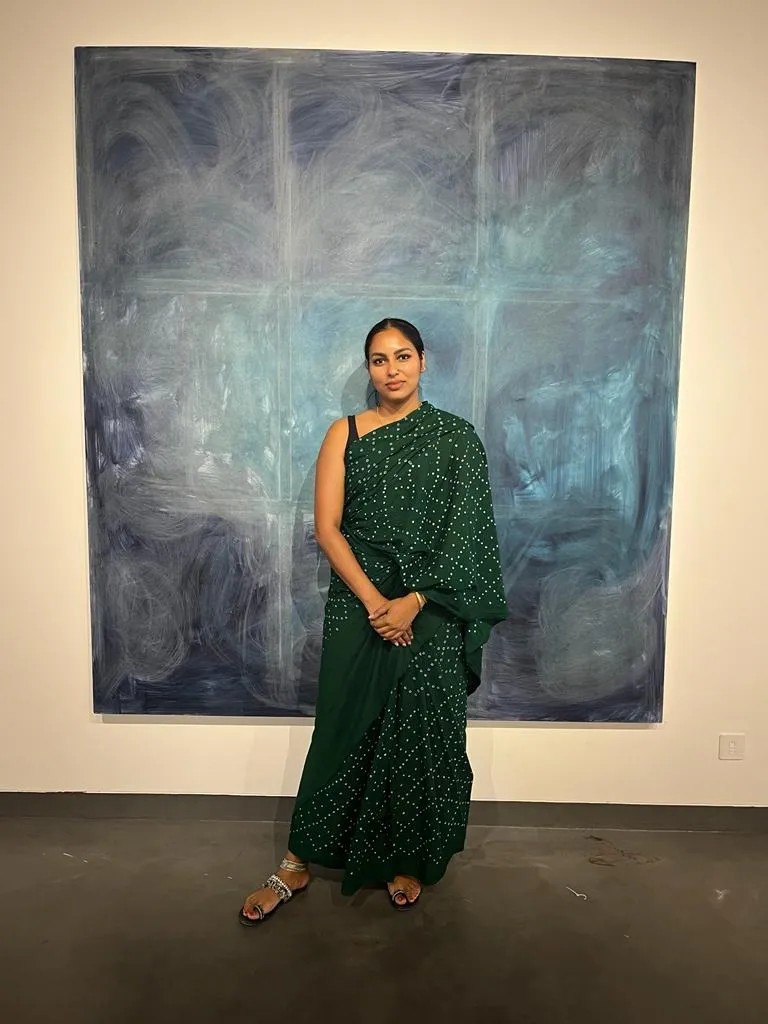JSW Foundation’s Hampi Art Labs is marrying local art with global artists
Founded by Sangita Jindal and Tarini Jindal Handa, the Hampi Art Labs has an exhibition space, an art gallery, a cafe, production facilities and studios for residency programmes.
UNESCO World Heritage site Hampi was one of the greatest cities in medieval India, housing the last great Hindu kingdom of Vijaynagar. Besides immense military power and wealth, this South Indian heritage site was also known for its intricate art, architecture, and stone carvings.
After being sacked by invaders, abandoned by its townsmen, and its ultimate demise in the 16th century, the world has now returned to Hampi to marvel at its art and learn from its ruins.
In an attempt to further elevate this experience with art, Sangita Jindal, Chairperson of JSW Foundation (a social development arm of the JSW Group), and daughter Tarini Jindal Handa, founded the Hampi Art Labs in Bellary.
Scheduled to open this month, the art lab houses an exhibition space, an art gallery, a cafe, production facilities, and studios for residencies.

Designed by Mumbai-based Sameep Padora and his studio sP+a, the structure of the Hampi Art Labs indicates the curves of the Tungabhadra River that flows through Hampi
“I have had a great affinity to the ancient city of Hampi since I first visited in 1983, and I am delighted to now be able to connect contemporary art with heritage and nature…It marks the next chapter in JSW Foundation’s legacy of supporting the arts ecosystem in India,” says Jindal.
Fluid and expansive
Spread across nine acres of barren land, the structure of the Hampi Art Labs is a marvel in itself. Designed by Mumbai-based Sameep Padora and his studio sP+a, the structure represents and pays tribute to the characteristics of the land it sits on–the large boulders, red soil, rugged hills, and the ebb and flow of its river.

Love Knot -- Sweet Pink (2015) by Bharti Kher is made using sarees, resin and concrete is displayed at the Hampi Art Labs' exhibition Right Foot First
Inspired by the concept of ‘No man can ever step in the same river twice’–referring to the continuous changing of a flowing river–the fluid architecture of the art labs indicated the curves of the Tungabhadra River that flows through Hampi.
One with the architecture and its structure, the exhibitions to be displayed at the art labs will be ‘fluid’ in nature, Kanika Pruthi, JSW Art Collections and Exhibitions Lead, tells YS Life.
“The way the gallery has been planned–we do not need to see it as a space to exhibit only paintings, sculptures and dimensional work. It is very adaptable to performance works as well,” Pruthi adds.
Hampi Art Labs currently has its first exhibition on display: a suite of 19 artworks from the Sangita Jindal Collection, curated by art curator Phalguni Guliani. These artworks were acquired by Jindal between 1998 and 2023.
Named ‘Right Foot Forward’–referring to the Hindu tradition where starting a new endeavour involves taking the first step with the right foot–the exhibition is symbolic of Jindal’s journey as an art collector, and the evolution of art in India, over the last 25 years.
To mark the beginning of Jindal’s new initiative, Guliani wanted to bring forth and showcase the roots of where it all started. It focuses on interdisciplinary connections between artists from across time periods and movements within art history.
The exhibition is designed to allow visitors to move through the space, comparable to the flow of the Tungabhadra that flows through the ancient city of Hampi.
A space for experimentation
“The reason why I did this exhibition was that many of these artists are masters themselves, and have delved into the practice of art… It will be a source of inspiration for the new artists who have come here for experimentation,” says Jindal, in an exclusive conversation with YS Life.
Born and raised in Kolkata, Jindal was inspired by her mother, Urmila Kanoria, to value and collect art. “During my childhood, I saw everyone in the family buying gold and jewellery. But my mother was the only woman in the family who wanted to invest in art and literature,” Jindal says. Kanoria founded the Kanoria Centre for Arts in Ahmedabad in 1984, one of the first residency programmes in India.

Sangita Jindal, Founder of Hampi Art Labs
Continuing the legacy, the Hampi Art Labs has initiated a three-month residency programme, starting January 2024.
Six months ago, the artists’ lab invited applications from across the globe.
“Artists had to share a profile, a portfolio and a project brief of what they wish to do during their residency programme,” explains Meera Curam, Director of Hampi Art Labs.
A jury, consisting Sangita and Tarini Jindal, and other advisors, will be shortlisting five to six artists to come in and spend three months at the art lab–to explore, experiment and practise their art forms.

Promiti Hossain (Bangladesh) wishes to gain an understanding of the mythological, historical, and contemporary facets of the lives of the people who are associated with Hampi | Image: Debolina Biswas
“The artists agenda should align with the thought process of Hampi Art Labs and should be linked with culture, heritage and the local handicraft of Karnataka,” Curam says. “If artists are choosing to come here, they have to be a part of the local community,” she adds.
JSW Foundation will provide residency artists a production budget of Rs 80,000 and a compensation of Rs 20,000 per week, for three months.
“It is a platform for creative practice. We are not collecting any artwork by these artists, unless Mrs Jindal plans to acquire them. We do not get anything tangible but we do develop a network of practitioners, which is very important,” Curam explains.
At present, five artists–Anirudh Shaktawat (India), Bhasha Chakrabarti (USA), Madhavi Gore (India), Promiti Hossain (Bangladesh), and Sharbendu De (India) are working out of the Hampi Art Labs.
“Unlike other residency programmes, Hampi Art Labs provides the opportunity to experiment with different mediums, which makes this so exciting,” Hossain says. “I am looking forward to working with handloom artisans here, it aligns with my vision of working on women-centric projects.”
Hossain from Dhaka is essentially an artist with a background of mixed nationalists (India and Bangladesh) and religious descent. Her work focuses on gender and societal discriminations. At Hampi Art Labs, she wishes to gain an understanding of the mythological, historical, and contemporary facets of the lives of the people who are associated with Hampi.

Bhasha Chakrabarti (USA), is interested in how artwork, even when grounded in local materials and symbols, can speak to issues beyond the local by situating her practice within global conversations around race, gender, and power | Image: Debolina Biswas
Chakrabarti from Honolulu, is interested in how artwork, even when grounded in local materials and symbols, can speak to issues beyond the local by situating her practice within global conversations around race, gender, and power.
Her project at Hampi Art Labs has been inspired by quilts and queer femininity.
“Under the quilt can be a space of liberation, but it can also be a space of violence and oppression,” Chakrabarti says while explaining her artwork, that’s still work in progress.
A believer of the transformative power of art, Jindal had earlier set up the Jindal Arts Creative Interaction Centre (JACIC) of the National Centre for the Performing Arts (NCPA), in 1994.
She has also undertaken the restoration of Shalimar Bagh, the Mughal Garden in Srinagar. “The Kantha Museum in Kolkata is in a bad stage, I am also trying to figure out a way to restore it,” she adds.
But does juggling between being the partner of an industrialist, and an art curator ever lead to an identity crisis, YS Life asks Jindal.
“I somehow manage my identity in a quiet way. My work speaks for itself…Jodi dak shune keu na ashe, tobe ekla cholo re (If no one answers your call, then walk alone),” Jindal concludes as she quotes Rabindranath Tagore.
Edited by Affirunisa Kankudti







